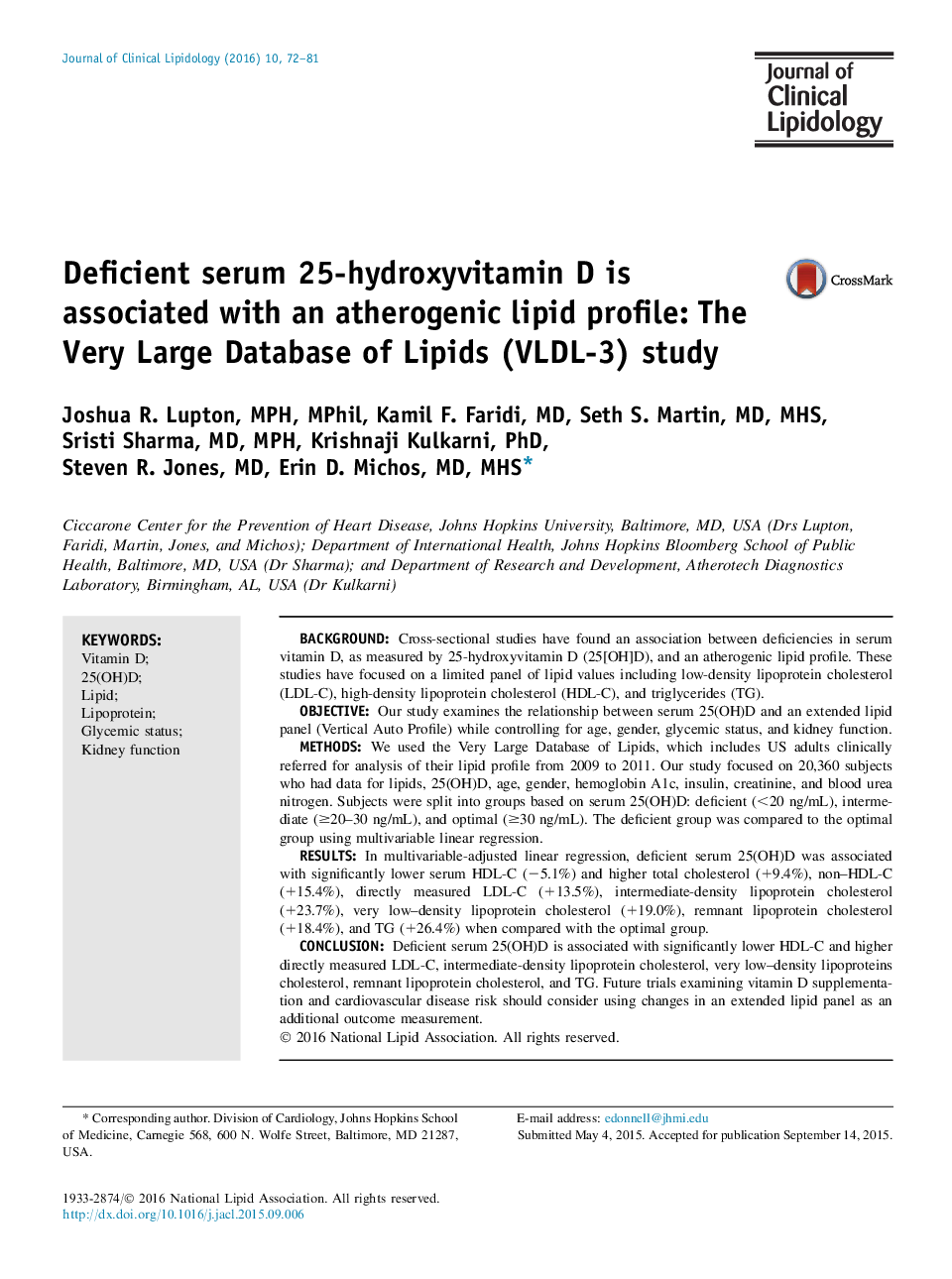| Article ID | Journal | Published Year | Pages | File Type |
|---|---|---|---|---|
| 5985177 | Journal of Clinical Lipidology | 2016 | 11 Pages |
â¢We examine the association between vitamin D (25[OH]D) and an extended lipid panel.â¢We compare deficient 25(OH)D.â¢We adjust for age, sex, HbA1c, insulin, creatinine, and blood urea nitrogen.â¢Deficient 25(OH)D is associated with 5% lower high-density lipoprotein cholesterol.â¢Deficient 25(OH)D is associated with 9% to 26% higher atherogenic lipids.
BackgroundCross-sectional studies have found an association between deficiencies in serum vitamin D, as measured by 25-hydroxyvitamin D (25[OH]D), and an atherogenic lipid profile. These studies have focused on a limited panel of lipid values including low-density lipoprotein cholesterol (LDL-C), high-density lipoprotein cholesterol (HDL-C), and triglycerides (TG).ObjectiveOur study examines the relationship between serum 25(OH)D and an extended lipid panel (Vertical Auto Profile) while controlling for age, gender, glycemic status, and kidney function.MethodsWe used the Very Large Database of Lipids, which includes US adults clinically referred for analysis of their lipid profile from 2009 to 2011. Our study focused on 20,360 subjects who had data for lipids, 25(OH)D, age, gender, hemoglobin A1c, insulin, creatinine, and blood urea nitrogen. Subjects were split into groups based on serum 25(OH)D: deficient (<20 ng/mL), intermediate (â¥20-30 ng/mL), and optimal (â¥30 ng/mL). The deficient group was compared to the optimal group using multivariable linear regression.ResultsIn multivariable-adjusted linear regression, deficient serum 25(OH)D was associated with significantly lower serum HDL-C (â5.1%) and higher total cholesterol (+9.4%), non-HDL-C (+15.4%), directly measured LDL-C (+13.5%), intermediate-density lipoprotein cholesterol (+23.7%), very low-density lipoprotein cholesterol (+19.0%), remnant lipoprotein cholesterol (+18.4%), and TG (+26.4%) when compared with the optimal group.ConclusionDeficient serum 25(OH)D is associated with significantly lower HDL-C and higher directly measured LDL-C, intermediate-density lipoprotein cholesterol, very low-density lipoproteins cholesterol, remnant lipoprotein cholesterol, and TG. Future trials examining vitamin D supplementation and cardiovascular disease risk should consider using changes in an extended lipid panel as an additional outcome measurement.
Graphical abstractDownload high-res image (114KB)Download full-size image
